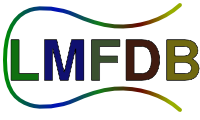Pictures for abstract groups consist of several disks arranged in concentric circles. The size, position, and brightness each encode information about the group.
Quick summary
- Each disk corresponds to a conjugacy class.
- Conjugacy classes with more elements are larger than those with fewer elements.
- Disks are arranged according to the number of prime divisors of the order of elements in the conjugacy class. The identity is in the center.
- Darker disks of the same hue typically have orders that are more divisible by $2$ than brighter disks with the same hue.
In more detail
Each disk corresponds to a conjugacy class in the group. The area of the disk is directly proportional to the number of elements in the corresponding conjugacy class. All elements in the conjugacy class have the same order $o$, which we use to determine both the color of the disk and the location of the disk.
For the color, write the common order of a given conjugacy class as $o = 2^A \times (\mathrm{odd})$, where $A = v_2(o)$. Typically, larger $A$ corresponds to darker colors in the hue-saturation-brightness color model. The odd part $\mathrm{odd}$ determines the hue, chosen in a way that is aesthetically pleasing.
The position of each disk is determined by the number of prime divisors (counted with multiplicity) of the order. The identity element is in the center. An annulus around the identity contains all disks with order consisting of exactly $1$ prime. Within each annulus, disks are placed to fit nicely. There is usually a small gap between adjacent annuli.
Implementation
The algorithm to visualize abstract groups was designed and implemented by David Roe.
- Review status: beta
- Last edited by David Lowry-Duda on 2023-02-28 17:25:29
Not referenced anywhere at the moment.
